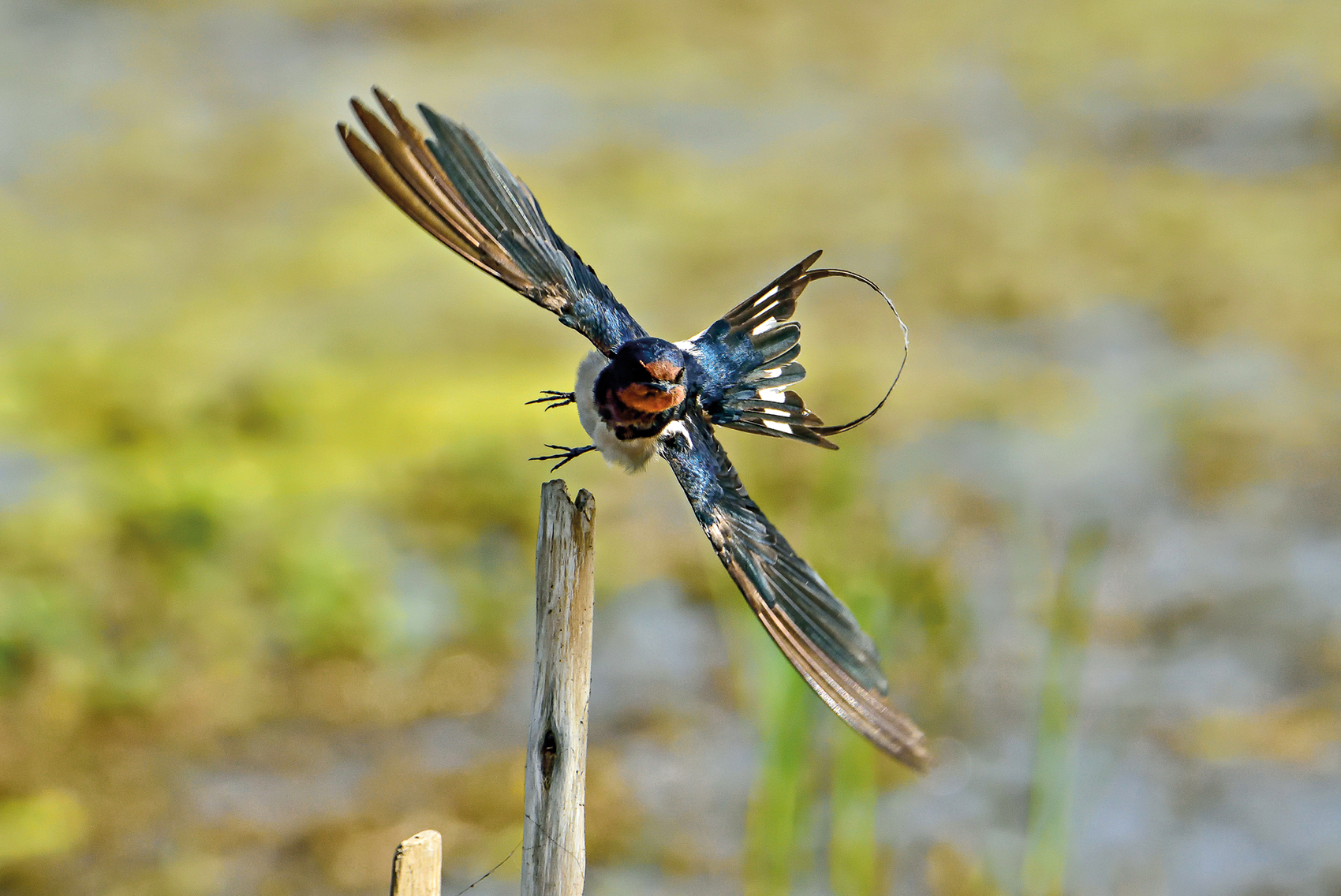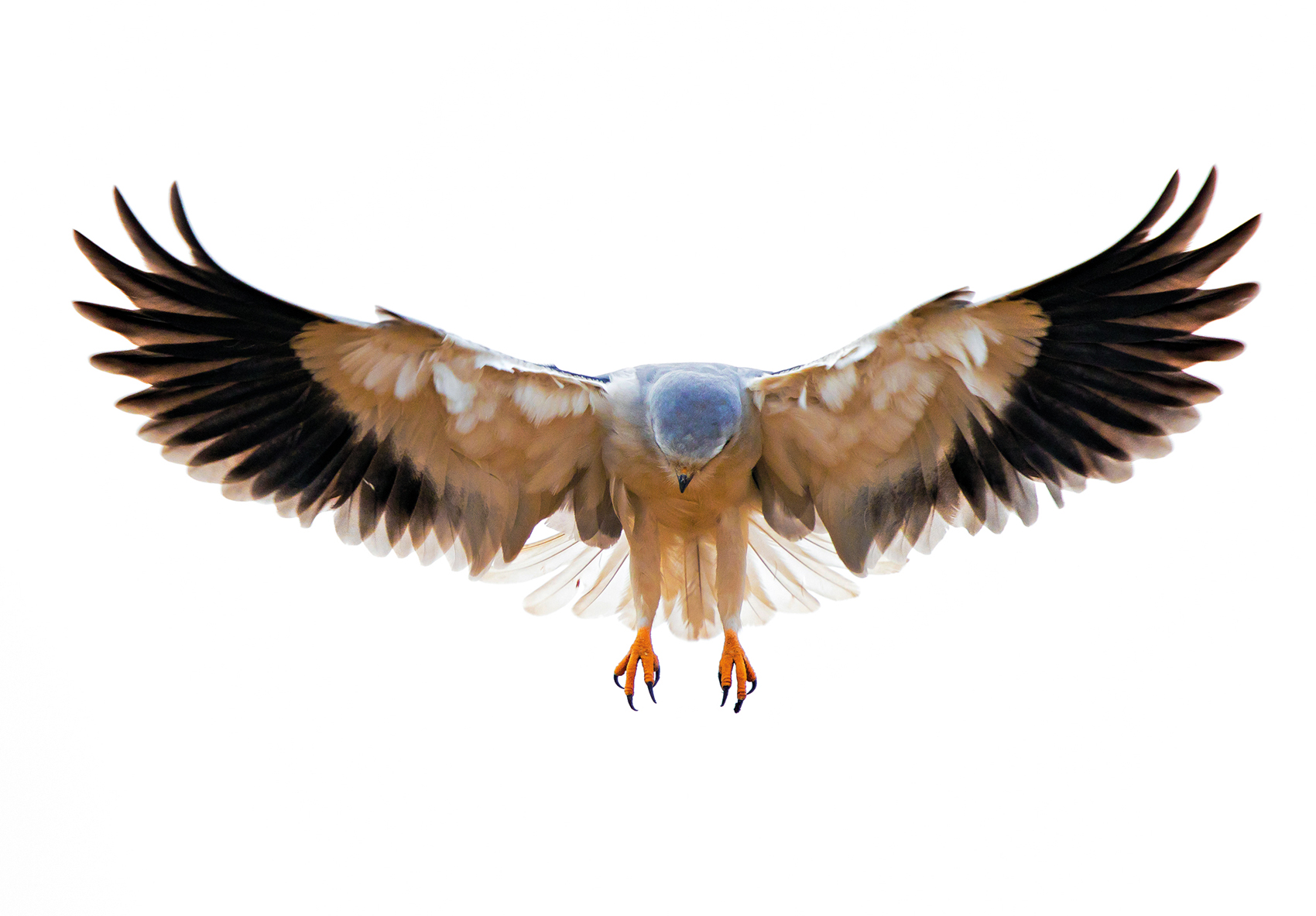Two Birding Tales
First published in Sanctuary Asia,
Vol. 40
No. 10,
October 2020
By Peeyush Sekhsaria
(Banner image) Streak-throated Swallows Hirundo fluvicola are highly social birds, and residents of the Indian subcontinent. They nest in colonies built into the sides of buildings, undisturbed by the close proximity of humans. Photo:Siddharth Edake.
Padharo Mhare Ghar
I was in rural Nepal post the 2015 earthquake to survey the damage. At a roadside shop, as I enquired about construction material, I noticed a bird flying at top speed into the verandah. Just as I thought it would crash into the wall, it broke flight to perch neatly on a little cup-shaped piece of mud… its nest! Amidst the destruction, as hundreds of people thronged the shop to buy construction material, the Barn Swallow Hirundo rustica continued calmly incubating its eggs. This acrobat of the skies is rarely seen on the ground. It even drinks water on the wing skimming over waterbodies to scoop water up into its open mouth. Its tiny feet are only used to rest on a wire or twig, rarely the ground. Its food almost completely comprises flying insects, possibly 60 per hour, and as many as 800 in a day! That’s 24,000 insects in a month. Given the number of Barn Swallows around, someone should analyse their direct impact on insect control!
In summer, they do descend to the ground next to muddy puddles, not to drink water, but to collect small balls of moist mud to build nests! These are almost always set up in verandahs, sometime inside schools, homes and shops. Barn Swallows have taken to human co-habitation quite well, much like House Sparrows. Some believe that a Barn Swallow nest inside your home or shop brings with it the blessings of Lakshmi, the goddess of wealth! I had a true taste of this quite recently while we were returning to Mussoorie from a little village named Devalsari. I was in the company of Dr. Surya Prakash, a Zoology Professor, who suggested a tea break. Instead of entering one of the many restaurants, we headed toward a small shop that sold electrical items! Just as we entered, a Barn Swallow swooped in at full throttle to settle on a tiny mud nest just above the billing counter. “This is the first time a Barn Swallow has nested inside my shop,” the shopkeeper said, adding that it was not the folklore of a money windfall that led him to welcome the bird, but his desire not to damage or destroy its home. What is more, his opening and closing times, 8 a.m. to 8 p.m. seven days a week, worked well for the bird.
The Barn Swallow is a unique nest builder. A breeding pair will use balls of wet mud, choose a suitable corner where typically the roof meets the wall… often even a bulb holder provides enough support! The mud balls are pasted in a slightly curved line into what finally resembles a cupped hand. The nest is then lined with grass.
 Barn Swallows are easily recognised even at a distance by their tell-tale forked tails and dark rumps. The most widespread of all swallows, they are found across all continents, save for Antarctica and Australia. Photo:Soumitra Goswami.
Barn Swallows are easily recognised even at a distance by their tell-tale forked tails and dark rumps. The most widespread of all swallows, they are found across all continents, save for Antarctica and Australia. Photo:Soumitra Goswami.
_C_1606304329.jpg) A flock of Streak-throated Swallows congregates on the bank of a waterbody, where they may also nest. These small, relatively dull, swallows are characterised by their weak flight. Photo:Vishwas Thakker.
A flock of Streak-throated Swallows congregates on the bank of a waterbody, where they may also nest. These small, relatively dull, swallows are characterised by their weak flight. Photo:Vishwas Thakker.
So the next time you see a little cup-shaped mud nest in your verandah, please remember the Barn Swallow often uses the same nest year after year, so don’t destroy it or disturb the birds in any way. Just go about your life normally and revel in the fact that you have been blessed by one of nature’s wonders. The birds will get used to you and permit you to watch them as they go about raising their chicks! As the shopkeeper did, you too can thank the little bird for having approved of you and say, “Padharo Mhare Ghar!”
Drops Like A Stone
I was out playing that hot, slightly dusty afternoon, I think when I was in the fourth grade. The playground was largely overgrown with grasses and shrubs. I heard the end-of-break bell, but didn’t move. I had noticed a bird high in the sky that seemed not to be moving, as though suspended. All my classmates had returned, but I stayed put. I just could not take my eyes off that bird. All of a sudden, it fell downward like a stone and hit the ground. I was shocked, thinking it was injured, perhaps even dead. As I ran towards it, the bird suddenly took off, seeming to struggle a bit, before flying off. I was stunned and woke from my reverie to realise I was the only one left in the entire playground. I had no idea how much time had passed, but I was surely late, and ran back to class.
The memory stayed with me. Some years later, when I started birding, guidebook and binoculars in hand, I discovered a bird that exhibited that same behaviour again and again. It was a Black-winged Kite Elanus caeruleus, a stunning raptor with red eyes, a grey-white body and partly black wings, visible on its shoulders when perched with wings folded. The wings, I noticed were long, extending to beyond the tail when at rest.
The phenomena that had held me spellbound is called ‘wind-hovering’. Some birds wind-hover above a point on the ground by flying into the wind at a speed equal to that of the wind. Here they hover motionless, foraging, or scanning for and eventually hunting down their prey. Basically, the elegant bird attempts to locate prey as it hovers, remaining still and suspended in the sky. When necessary, it uses rapid wing beats while repositioning its tail feathers to work the wind current to stay at its fixed location. Often the bird will manouver itself, relocating and adjusting its height, hovering constantly to maintaining a perfect position vertically above its prey. When the time is right, it plummets downwards, breaking its fall at the very last second to seize its unsuspecting prey in talons perfectly designed to land a killing blow. Often hunts may be abandoned midway. Some suggest the success rate could be one in a hundred.
 The ability to ‘wind-hover’ isn’t unique to kites; hummingbirds, kestrels, hawks and terns, among other birds, are also known to employ this strategy to scan the ground for prey. They use the laws of physics to their advantage, flapping their wings calculatedly against wind velocity to remain practically motionless in mid-air. Photo:Prasad Sonawane.
The ability to ‘wind-hover’ isn’t unique to kites; hummingbirds, kestrels, hawks and terns, among other birds, are also known to employ this strategy to scan the ground for prey. They use the laws of physics to their advantage, flapping their wings calculatedly against wind velocity to remain practically motionless in mid-air. Photo:Prasad Sonawane.
I was a lucky boy to have witnessed the final part of a long hunt, perfected by evolution over millennia. There are few other birds that wind-hover in a similar way. One that wind-hovers, not as spectacularly as the Black-winged Kite, is the Kestrel. And then you have the stunning hummingbirds of the Americas (see page 108), probably the most accomplished, as their remarkably long tongues obtain nectar from flowers – but that is another story.
Black-winged Kites are relatively common and can often be spotted at the edges of cities, resting typically on wires and electrical posts. Maybe it is because they are so common, we tend not to pay them much attention, despite their stunning looks and capabilities. What is more, they also play a vital role in keeping rodent populations under check. A fascinating description, dating back to 1984, was written by Lt. General Baljit Singh in the Newsletter for Birdwatchers. On a still developing Army Cantonment, he came across a large resident population of Black-winged Kites in a grove of babul trees. Wondering what kept them there, he discovered a large rodent population of Indian desert jird, closely related to gerbils of the Thar desert, along the edge of a canal that ran by the babul grove. The kite population clearly hunted the diurnal jirds. Once, when heavy rain and flooding caused the jirds to abandon their borrows, the Black-winged Kites also disappeared, in search of prey elsewhere.

Photo:Sandeep Somasekaran/Public Domain
It is not that birdwatchers or even regional languages have not taken note of this bird. It is called Kapshi in Marathi – literally meaning cotton-like; and Kumud in Sanskrit, which refers to the white lotus that blooms in the night. Kiran Purandare, a Pune-based birdwatcher, writer and conservationist has authored a number of books on the birds of Maharashtra and has written a book dedicated to the Black-winged Kite called Kapshichi Diary, which hopefully will be back in print soon.
Peeyush Sekhsaria, trained as an architect and geographer is an amateur naturalist with a special interest in birds, nature education and art, more or less in that order. Some of his work can be seen at www.peeyushsekhsaria.com.



_C_1606304329.jpg)

